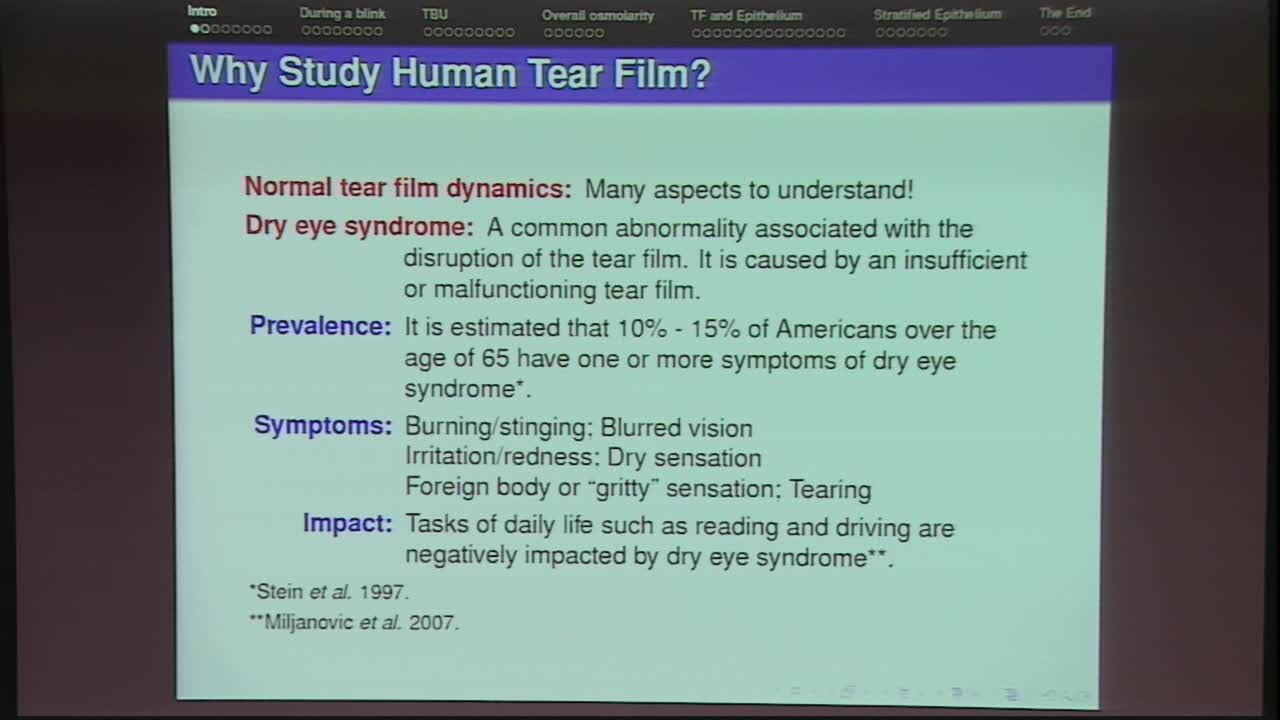Models for Tear Film and Ocular Epithelium Interaction
Presenter
March 14, 2018
Keywords:
- Tear film, cornea, epithelium, dry eye, hyperosmolarity, ion transport
Abstract
We extend prior models for ion and water transport in corneal epithelial cells by Levin et al. [Invest. Ophthalmol. Vis. Sci. (2006) 47(1):306-316; (2004) 45(12):4423-4432] in order to determine their interaction with a thinning and hyperosmotic tear film. Each cell is considered as a compartment, and there is no variation along this hypothetical cornea. Thus, the cornea is approximated a stack of compartments with the tear film at the most anterior end, and a sequence of compartments representing cells extends posteriorly from the tear film. A substantial system of differential algebraic equations governs the transport of several ions and water to and from each cell and the tear film. We conserve charge as well. There is also a route for intercellular transport. The tear film compartment loses water to the environment and its increasing osmolarity drives a response from the epithelial cells. We study several configurations for the epithelium, allowing us to consider mice and humans. The epithelium is most effected just below the tear film and the effect lessens with depth into the tear film. Beyond giving us some idea of how each cell layer responds, substantial questions arise about the requirements for
a valid and sensible model. These questions include parameter estimation and the distribution of ion and water channels at interior interfaces between epithelial cells. We discuss the results and some of these questions. We find that the affect on the cells varies with evaporation rate and conditions. The results of the work are important since prior studies have hypothesized that epithelial transport is either negligible or important during
evaporative thinning of the pre-corneal tear film. After incorporating pathways of immune response, the model could help shed light on the development of dry eye syndrome, which affects millions of people.
This work is in collaboration with S.R. Walker of U. Delaware, and is supported by National Science Foundation grant DMS 1412085. The conclusions of this work do not necessarily reflect the views of the NSF.
